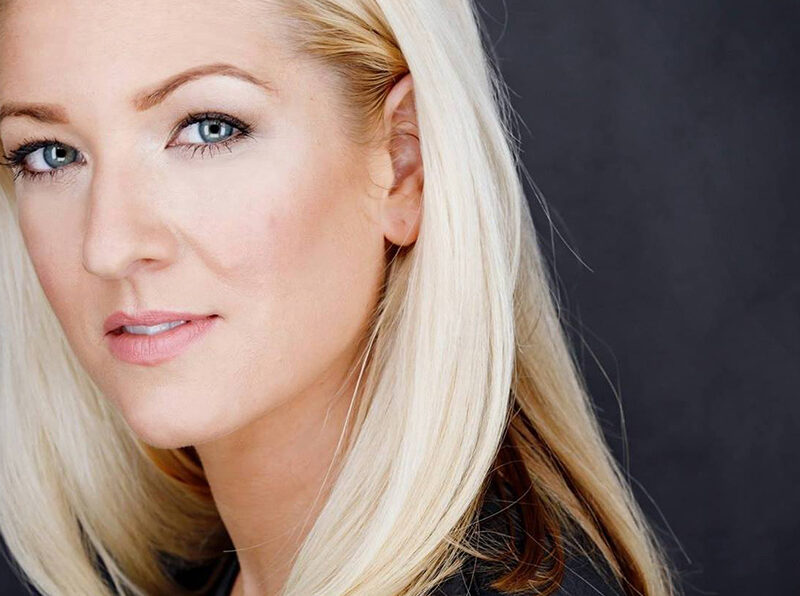
How to write your first novel….
Local author Ian CP Irvine reveals the secrets of his success
It’s said that everyone has a book within them. I don’t know who said that, or when, but I’ve heard it said several times and I think it’s probably true. The question of how to get that book out of you and then printed for others to read is a completely different question. So how do you do it? Here are my top tips on how you might want to go about doing it. It’s how I wrote Haunted From Within which I wrote and published on Amazon within five months, start to finish, while I still had a day job.

Ian Irvine
Step 1: Once you have an idea for a book, come up with a quick, simple way to describe what the book will be about. (Not too complicated, just a one liner, but one which also captures what type of book it will be: a thriller, a murder mystery, a romance? It’s your ‘internal pitch’ to guide you through the next nine steps.)
Step 2: Perhaps the most important step with any book is to first think of a good title. Something that catches your – and future readers – imaginations, and will look good on a front cover. It has to be snappy, to the point, and if possible, immediately capture the interest of readers.
Step 3: This is the first controversial point, perhaps. Now, having got your basic one line theme/idea, you start the process of planning on how to write the book itself. To do this you think about how you are going to start the book. What is the opening scene? Then you think of how the book is going to end (remembering roughly what the book is about, and what the story encompasses at a very high level without any real detail.) Lastly, you come up with the ‘middle’ of the book – what part of the story happens half way through? If you can get the reader to the middle, what tension do you create that then propels them eagerly beyond towards the last few pages of the story? Once you have got this far, a lot of the hard work has been done.
Step 4: Many people have the desire to write a book, and come up with an idea, but few people actually do it. Why not? The reason is that most people are not motivated enough to put in the time, or they don’t believe it is possible for them to actually achieve their dream. To create this internal motivation, and to help you believe that you can and will write the book, I want to teach you a motivation trick I once learned that can literally change your life – and which can also be applied to any task or goal. When you want to achieve anything, to create anything, and to circumnavigate all negative thoughts that you could potentially spend so long pondering that you never start the journey, I want you to imagine the end goal in your mind. Imagine that you have already ACHIEVED and FINISHED the task. In the case of writing a book, I want you to imagine the end product, the book. To do this, to create this internal motivation, find a quite spot somewhere where you won’t be disturbed, close your eyes, and then build a mental picture in your mind of what that finished book will look like. Picture it. See it. See the book in your mind’s eye, the name of the book on the front cover, in big letters, and your name on the top or bottom of the cover.
Now let me ask you a question: when you do this, is this mental image you have constructed, small or large? How far away from you is this picture? Do you imagine it far away, or close by, just in front of you?
So far so good. Now, still with your eyes closed, I want you to do the following steps. First, if you picture the book in your mind in black and white, I want you to force yourself to add colour. In your mind, make the picture of the book cover, brighter, more vivid. See the title get larger, your name more prominent. Next, I want you to imagine the size of the book getting bigger. Bring it closer to you. Imagine it now, not far away, but right there, in front of you. So close that you can almost reach out and touch it. So close that it’s real. It’s there. It’s finished! The book that YOU wrote! Imagine it. Remember it. And now go to Step 5:
Step 5: Repeat Step 4. And keep repeating it until when you close your eyes, you can see the finished book right there, front and centre in your mind’s eye in full colour. Complete. Ready to sell.
Step 6: Now can you see the finished product in your mind, and you KNOW that you can write this book… if fact, you can now easily imagine that you have ALREADY written it, the only question is, how did you do it? From this part forward, the book will write it itself. All you have to do is make sure you sit down at the computer regularly – a couple of hours a day – and start to type. Don’t forget, you’ve already decided how the book will start. You know how it ends, and you know that en route you go through the ‘middle’, which you have already also decided. The rest of it is just the journey, a journey which you will go on as you write the book. One chapter at a time. When planning a book there are apparently two types of writers: a plotter or a pantser. Of the two, I am a pantser – once I have the title, the beginning, middle and the end, the rest I effectively make up as I go along. Incredibly, a lot of the plot is henceforth written by your subconscious. Your mind knows the plot of the book, and whilst you are sleeping, or walking, or listening to music, your active subconscious is busy creating characters, building elements of the plot, and writing the book in the back of your mind. When you now sit down at the computer, you effectively let the book be written through you. In your mind’s eye, characters will appear. They will do things. You will describe what they do. Trust in yourself. Start writing. And start heading towards the middle of the book. Start the journey. And let yourself enjoy it!
Step 7: Make each chapter a short story in itself, probably about 3000 words each. At the end of each chapter have a cliff-hanger that can only be resolved by reading the next chapter. Make the readers turn that page. Stop them from going to sleep at 2am until they have read the next chapter. And then the next. Make them stay up all night!
Step 8: As you start writing, decide how long the book is going to be. Many books today are about 100,000 words. Consider this; it costs the publisher more money to publish and translate long books, but they may still have to sell them for the same price, regardless. More words means less profit. So if you want to get a traditional publisher, word count may be important. As you write, continually bear in mind that if your book is going to be 100,000 words then you must reach the middle of your book by 50,000 words. As you cruise past the middle of the book, towards the climax of the story, consider how the story will come to an end, how the different threads of the story will come together and be resolved. Consider how you will arrive at the final page, with the story told, the reader exhausted. And begging for more. Don’t overshoot. And don’t worry about doing this. Let your subconscious help you do the planning.
Each day when before you start writing, or after finishing your writing for the day (2000-3000 words a day is a good goal), go for a walk, go for a swim, and ponder what will be in your next chapter. Think, “If I need to get to the middle of the book by 50,000 words, for example, how many chapters do I have left before I reach the middle of the story? What elements must be covered in those chapters?” But don’t worry about those details. Just ask yourself the questions. Then enjoy the sunshine, or your swim. Just ask the internal questions. Let your subconscious come up with the answers. Just make sure you turn up the next day, at your computer/ your desk, to continue writing.
Step 9: Each day, print off what you have read, and reread it that evening over a cup of tea, or a glass of wine. Start the editing process by marking up mistakes, or make notes to yourself about what you need to change in the next draft. Then after reading each set of pages several times, set them down on a pile beside your desk, so you can visually see the book growing, and forming, and reaching conclusion. Take pride in what you are achieving as the pile grows taller and thicker!
Step 10: Finish the book. Get to the final page. Pat yourself on the back. Take a breather. Add that final set of pages to the pile your already have, and then pick it all up. Feel how heavy it is. Flick through all the pages. Let yourself feel the satisfaction of having now completed the first draft of your very own first book! Savour the moment. Then close your eyes, take a moment. Relax. Open your eyes, and start reading what you have written from start to finish. Set aside the time to read, and to complete your own book. Make more edits as you go along, recording them in black or red pen on your printed pages. When you have finished, decide if everything works? Do you need to make major amends? Are you happy with the story and the plot? Have you made any mistakes in the plot? At this point you may be surprised to find that your imagination and subconscious has created something that actually works. Don’t be. This process DOES work.
During the process of writing, you will also develop better ways of writing. Better ways of expressing yourself. You will “find your own voice.” You may find that conversations you have written down seem stilted, or unnatural, or unnecessary. You may find that some descriptions are over descriptive. Some action is too dry. Some chapter endings not exciting enough. You will fix all of these in the next steps.
Step 11: Edit your book. Go back to the beginning, and page by page, sit down at the computer and go through each red note that you have made on your printed pages. Fix typos, edit spelling mistakes. Make plot changes. Sweeten written conversations or make them more gritty. Add missing characterisation. Tweak the endings of chapters to be more exciting. Delete ANY words you think don’t add to the book. Shorten each chapter, cutting out words where words can be cut. Correct the whole book. Then print off the completed Second Draft. Read it. Mark down any edits.
Step 12: Do that all over again. Then print off the completed THIRD Draft. Read it. Mark down any edits.
Steps 13 – Step 20: Do this same step again. Then again. Between four to fifteen times. Until you don’t think you can improve it anymore.
So what then?
If you have written the book on a computer, in Word, download a professional software editing package, such as ProWritingAid, and use it to identify grammatical errors, mistakes, repetitions and a whole host of other ways in which your writing can be further improved. If you agree with the suggested changes which your editing software may throw at you, or you notice your own spelling mistakes and grammatical errors, FIX them. Embrace them all. Correct them all. One mistake at a time. With each correction you move closer to perfection, and to the finished book.
Give this next draft of your book in printed form to someone who doesn’t know you very well. Ask them to read it, and to let them know what they think of it. Beg them to be honest. And request that they go through the printed pages with a red pen. Hopefully, they will be honest and come back with lots of criticism. If they do, hug them and buy them a present. Then rush back to your computer and fix all the problems they have highlighted. Errors? Suggested plot changes? Corrections? Give the book to someone else you don’t know. Ask them for a honest opinion and to spot mistakes. Hug them. Fix your mistakes. And then give the next draft to someone else. When you’ve run out of people to ask for help from in reviewing your book, OR when everyone stops spotting mistakes or suggesting how to improve the plot, and they just smile at what you have written and give you genuine compliments, then the time is coming closer to the big decision you will have to make: how do you want to publish the book? Close your eyes, picture the front cover in your mind. Imagine that it is published.
By this stage, you will have written your book. You will have a draft which is ready to do one of two things with:
- Either you decide to seek a traditional publisher
- Or you decide to Self-publish.
The traditional publishing route
Getting a traditional publisher is difficult. For most people, this will not happen. But it might. If you decide to go down this route, close your eyes, imaging the finished, PRINTED version of your book, sitting on bookshelves in a shop. And then move to the next step.
The TDPR Step 1: Buy the book From Pitch to Publication by Carol Blake. Read it. Follow its instructions. Good luck!
In considering this route, you may want to be aware of the fact that to do this, you may first have to get a literary agent. Once you have an agent, the agent has to submit your book to publishers. Most publishers will reject it. Hopefully one will accept it. Once accepted they will make you an offer for the rights to your book. If accepted by you, they will edit the book and plan to publish it for you. Ultimately they will publish it and your dream will come true: your book will be published! What happens next is down to luck, marketing and publicity. Just be aware that having completed your final draft, the timescales of getting an agent, a publisher, and the final book on the shelves, could be a further one to four or five years!
The Self-Publishing Route
If you decide to Self-publish your book, there are three main advantages:
1: You maintain the rights to your book and what you do with it.
2: You can publish it very quickly indeed. Within weeks, people can be buying your book online either in printed paperback, as an e-book, or as an audible book.
3: Depending on which platforms or ebook publishers you use, you may possibly maintain the bulk of the revenue that you earn from your books!
There are many services available to help you self-publish, but without doubt, in my humble opinion, the easiest and best is to publish your books on Amazon using the Amazon Kindle Direct Publishing Service (KDP). (An alternative is SMASHWORDS, which is very popular in the USA.) Once you have the basics in place, you can literally publish an ebook in under 15 minutes, and once published, the ebook becomes available worldwide for sale within 72 hours. Incredibly, people start buying your book, and after a month or two, Amazon starts sending you royalties of either 35% or 75% of your list price, depending on how expensive you make your book.
So what are the basics you need before you can publish an ebook? The first step is to create a book cover and to save this is an electronic format (JPEG). There are lots of ways to do this, either yourself, or by paying someone else to do it for you. To start, simply type in “Creating an ebook cover” into your browser and see what comes up. Next you will need a catchy blurb for you book that will summarise what your book is about. And then you will need to save the draft of your book in an electronic format which is acceptable to Amazon.
After this, you need to decide which genres your book fits (Amazon will give you two options to choose from a long list), and then also seven keywords which describe your book and help Amazon to let people search for those keywords and find your book. There are a couple of other things, like deciding your published author name, and the price you want to sell your book for. But once you start exploring Amazon KDP, what you need to do and how to do it, all becomes apparent.
Remember, using this above process, I first thought of Haunted From Within, imagined it, wrote it and published it within FIVE months.
So, now you know how it’s done, WHAT’S STOPPING YOU?
(c) Ian CP Irvine www.iancpirvine.com

Local author Ian CP Irvine has just released his latest book “The Assassin’s Gift”, now available on Amazon for Kindle and in Paperback. Since deciding to self-publish his own books he has now had over 1.75 million books downloaded all over the world. Ian is offering a free ebook copy of his international bestseller ‘Haunted From Within’ (with over 1500 Five Star Reviews on Amazon alone) for Time and Leisure readers. Go to: http://eepurl.com/dP6Hpn






